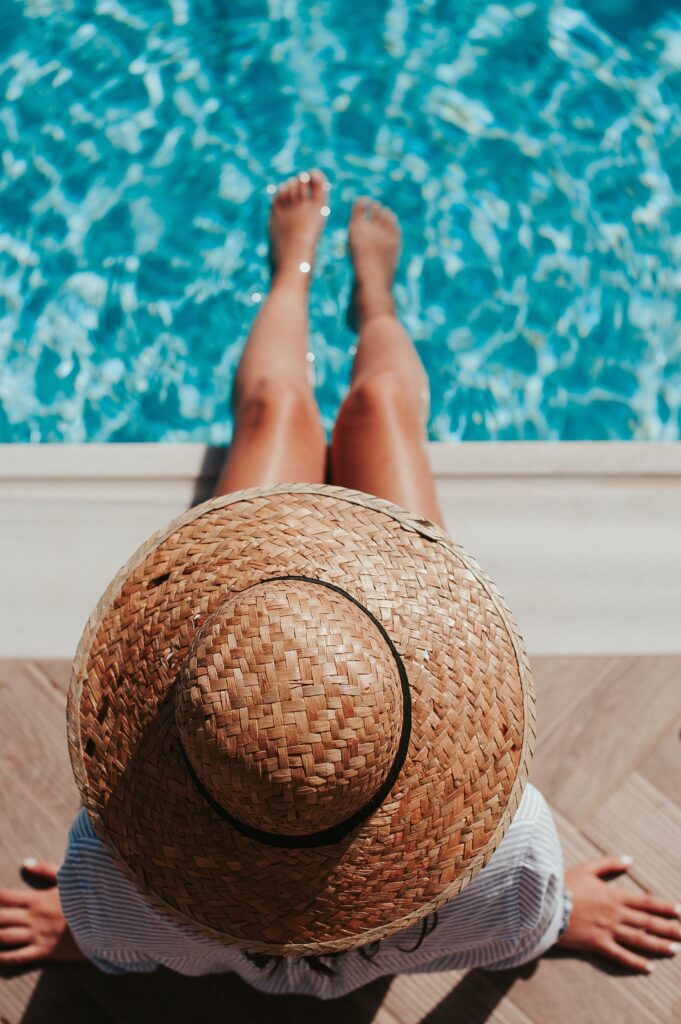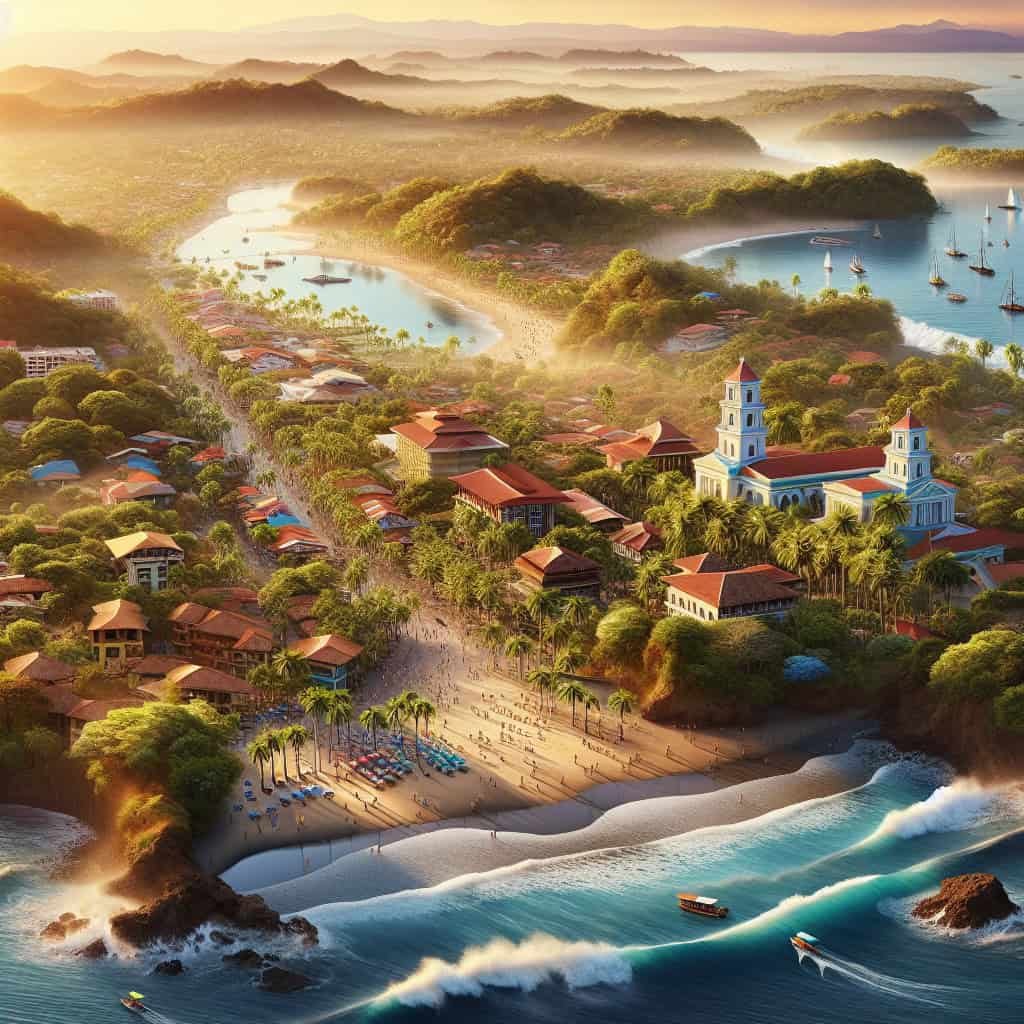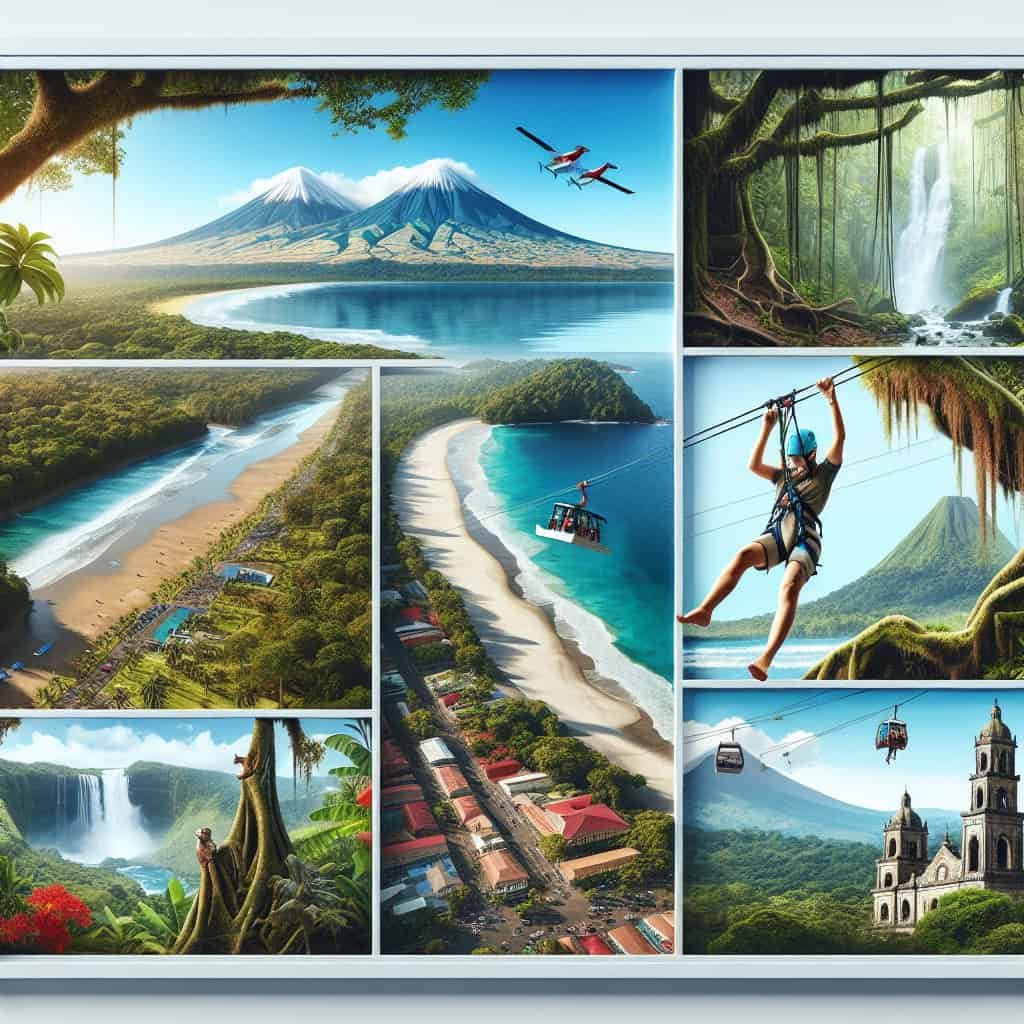Thinking of visiting Nicaragua but unsure of the perfect time to go? Look no further! This article will guide you through the best time to visit this beautiful country, sharing insights on the weather, festivals, and activities that make each season unique. Whether you’re dreaming of exploring the stunning beaches, hiking through lush rainforests, or immersing yourself in the vibrant culture, we’ve got you covered. Let’s discover the ideal time to experience the wonders of Nicaragua!
Climate in Nicaragua
Nicaragua is known for its pleasant tropical climate, making it an attractive destination for travelers throughout the year. The country experiences two main seasons: dry season and rainy season. The climate varies depending on the region, with the Pacific coast, Caribbean coast, and highlands each having their own distinct weather patterns.
Overview of Nicaragua’s climate
Nicaragua’s climate is characterized by warm temperatures throughout the year. The average temperature ranges from 25°C (77°F) on the coast to 20°C (68°F) in the highlands. The humidity levels are higher on the Caribbean coast due to its proximity to the ocean, while the Pacific coast experiences less humidity.

Dry season in Nicaragua
The dry season in Nicaragua runs from November to April. During this time, the weather is sunny and the chances of rainfall are minimal. The temperatures are warm and pleasant, making it an ideal time for outdoor activities and beach vacations. The dry season is also popular among tourists, so expect larger crowds and higher prices during this time.
Rainy season in Nicaragua
The rainy season in Nicaragua occurs from May to October. While the name may suggest constant downpours, the rain typically comes in short bursts followed by periods of sunshine. The rainfall rejuvenates the lush green landscapes and contributes to the vibrant flora and fauna in the country. The rainy season is considered the off-peak tourist season, with fewer visitors and lower prices.

Pacific coast climate
The Pacific coast of Nicaragua has a tropical savanna climate, characterized by hot and dry weather. The average temperature hovers between 28°C (82°F) and 32°C (90°F) throughout the year. The dry season on the Pacific coast is the perfect time for beach lovers and water enthusiasts, with calm waters and excellent conditions for diving, snorkeling, and other water sports.
Caribbean coast climate
The Caribbean coast of Nicaragua experiences a more tropical rainforest climate due to higher rainfall and humidity levels. The region is influenced by the Caribbean Sea and receives more rainfall throughout the year. The average temperature ranges from 26°C (79°F) to 30°C (86°F), providing a warm and tropical atmosphere. Despite the rain, the Caribbean coast offers stunning beaches, lush rainforests, and an opportunity to experience Afro-Caribbean culture.

Highlands climate
The highlands of Nicaragua, including cities like Granada and Matagalpa, have a more temperate climate compared to the coastal regions. The highlands enjoy lower temperatures due to the higher elevation. The average temperature ranges from 20°C (68°F) to 25°C (77°F), offering a pleasant escape from the heat and humidity of the coastal areas. The highlands are known for their picturesque landscapes, colonial architecture, and coffee plantations.
Peak Tourist Season
Timeframe of peak tourist season
The peak tourist season in Nicaragua typically coincides with the dry season, lasting from November to April. During this period, visitors flock to the country to enjoy the warm and sunny weather. The peak tourist season is especially popular during the Christmas and New Year holidays, as well as Easter week.
Advantages of visiting during peak tourist season
Visiting Nicaragua during the peak tourist season offers several advantages. The weather is consistently sunny and dry, creating ideal conditions for outdoor activities and beach vacations. The popular tourist destinations have a lively atmosphere with various events and festivals taking place. Additionally, hotels, restaurants, and tour operators are fully operational and offer a wide range of services.
Disadvantages of visiting during peak tourist season
However, there are some downsides to visiting Nicaragua during the peak tourist season. The increased number of tourists can lead to crowded attractions, longer wait times, and higher prices for accommodation and tours. It is necessary to make advanced reservations and be prepared for limited availability. Popular destinations can feel more touristy and may lack the tranquility and authenticity found during the off-peak season.

Off-Peak Tourist Season
Timeframe of off-peak tourist season
The off-peak tourist season in Nicaragua corresponds with the rainy season, which runs from May to October. This period is characterized by lower tourist numbers and reduced prices for accommodations and tours. While the rainfall may deter some travelers, visiting Nicaragua during the off-peak season has its own advantages.
Advantages of visiting during off-peak tourist season
One of the main advantages of visiting Nicaragua during the off-peak season is the lower number of tourists. This allows for a more intimate and authentic experience, with quieter beaches, less crowded attractions, and a chance to interact with locals on a more personal level. The lush green landscapes during the rainy season create stunning scenery for nature lovers and photographers.
Disadvantages of visiting during off-peak tourist season
Traveling during the off-peak season also has its challenges. The rain can be more frequent, affecting outdoor activities and making some roads impassable. It is important to pack appropriate rain gear and be prepared for potential itinerary changes due to weather conditions. Some hotels and tourist services may have reduced operating hours or limited availability during this time.
Specific Months to Consider
January
January is a popular time to visit Nicaragua, especially for those looking to escape the winter months in other parts of the world. The weather is sunny and dry, offering ideal conditions for exploring the country’s natural beauty and enjoying outdoor activities.
February
February is another great time to visit Nicaragua. The weather remains sunny and warm, making it perfect for beach vacations. The Pacific coast offers excellent conditions for surfing, while the highlands provide a cooler escape.
March
March is characterized by pleasant temperatures and plenty of sunshine. It is an excellent time to visit both the Pacific and Caribbean coasts, as well as the highlands. Additionally, March is the time when the Festival Internacional de Poesía de Granada, a renowned poetry festival, takes place.
April
April marks the end of the dry season in Nicaragua. The weather remains warm, but the chances of rainfall increase slightly towards the end of the month. It is a good time to visit before the rainy season begins, as some areas may start experiencing occasional showers.
May
May signals the start of the rainy season in Nicaragua. While the rainfall becomes more frequent, it is still possible to enjoy outdoor activities during this time. The landscapes are lush and vibrant, and the tourist crowds have significantly decreased.
June
June continues the rainy season, with regular rainfall throughout the country. Despite the rain, the temperature remains warm and pleasant. It is a great time to explore the rainforests and engage in eco-tourism activities.
July
July is a popular month for travelers seeking to experience the vibrant culture of Nicaragua. The rain contributes to the celebrations of La Griteria and Purísima, traditional festivals that showcase the country’s religious and cultural heritage.
August
August is a good month to visit Nicaragua, as the rainfall begins to decrease towards the latter half of the month. It is a great time to enjoy outdoor activities and explore the country’s diverse landscapes.
September
September is still within the rainy season, so expect occasional showers. However, the rain is typically manageable and doesn’t hinder exploration. It is a quieter month with fewer tourists, allowing for a more peaceful experience.
October
October marks the end of the rainy season in Nicaragua. While there may still be rainfall, it becomes less frequent as the month progresses. Traveling during this time offers the advantage of lower prices and fewer crowds.
November
November is the transition month between the rainy season and the dry season. The weather begins to improve, with less rainfall and more sunny days. It is a good time to visit before the peak tourist season begins.
December
December heralds the start of the peak tourist season in Nicaragua. The weather is sunny and dry, and the country is filled with holiday festivities. It is an ideal time for beach vacations, outdoor activities, and cultural exploration.

Festivals and Events
Semana Santa (Holy Week)
Semana Santa, or Holy Week, is a significant religious event in Nicaragua. It takes place in the week leading up to Easter Sunday and is celebrated with various religious processions, reenactments, and festivities. The cities of León, Granada, and Masaya are known for their elaborate Semana Santa events.
San Juan del Sur International Film Festival
The San Juan del Sur International Film Festival, held annually in November, showcases both local and international films. The festival celebrates the art of cinema and brings together filmmakers, actors, and film enthusiasts from around the world.
La Griteria and Purísima
La Griteria and Purísima are traditional Nicaraguan festivals held in December to honor the Immaculate Conception. La Griteria involves lively street celebrations, music, and fireworks, while Purísima is a more religious event with processions and prayers dedicated to the Virgin Mary.
Festival Internacional de Poesía de Granada
The Festival Internacional de Poesía de Granada is a renowned poetry festival held every February in the colonial city of Granada. The festival attracts poets from all over the world and features poetry readings, workshops, and cultural activities.
Fiesta del Toro Guaco
The Fiesta del Toro Guaco is a unique traditional festival celebrated in Masatepe in July. The festival involves members of the community dressing up as devils and chasing a person dressed as a bull through the streets. It is a lively and colorful event that showcases Nicaraguan folklore and culture.
Budget Considerations
Cost differences between peak and off-peak seasons
The cost of traveling to Nicaragua can vary depending on the season. During the peak tourist season, prices for accommodation, transportation, and tours tend to be higher due to increased demand. In contrast, the off-peak season offers lower prices and more opportunities for bargaining.
Accommodation prices
Accommodation prices in Nicaragua vary depending on the type of accommodation and location. During the peak tourist season, hotels and resorts tend to charge higher rates, especially in popular tourist destinations. It is advisable to book accommodation in advance to secure the best prices.
Transportation costs
Transportation costs in Nicaragua can also fluctuate depending on the season. During the peak tourist season, transportation services may have higher rates, especially for flights, car rentals, and private transfers. It is recommended to compare prices and book in advance to secure the best deals.
Food and drink expenses
Food and drink expenses in Nicaragua are generally affordable, regardless of the season. Local street food and traditional restaurants offer budget-friendly options, while upscale dining establishments may be pricier. Off-peak season travelers may find additional discounts and promotions at restaurants and bars.
Activities and Attractions
Beach activities
Nicaragua’s stunning coastline offers numerous opportunities for beach activities. Popular beach destinations include San Juan del Sur, Corn Island, and Playa Maderas. Visitors can enjoy swimming, sunbathing, surfing, snorkeling, and fishing. The Pacific coast is known for its consistent waves, making it a favorite among surfers.
Volcano hikes
Nicaragua is home to several active and dormant volcanoes, making it a paradise for volcano enthusiasts and hikers. Volcan Masaya, Volcan Concepcion, and Volcan Mombacho offer challenging hikes with breathtaking views of the surrounding landscapes and crater lakes.
Colonial city tours
The colonial cities of Granada and León are rich in history and charm. Exploring their colorful streets, colonial architecture, and historic landmarks is a must for any visitor to Nicaragua. Guided tours can provide insights into the country’s colonial past and cultural heritage.
Nature and wildlife exploration
Nicaragua boasts diverse ecosystems and ample opportunities for nature and wildlife exploration. The Indio Maíz Biological Reserve, Montibelli Nature Reserve, and Bosawás Biosphere Reserve are just a few of the protected areas where visitors can experience the country’s incredible biodiversity.
Surfing and water sports
Nicaragua’s Pacific coast offers excellent conditions for surfing, with a variety of breaks suitable for all skill levels. Surf camps and schools are available for beginners, while experienced surfers can challenge themselves on powerful reef breaks. Other popular water sports include paddleboarding, kayaking, and fishing.
Safety and Security
General safety precautions
While Nicaragua is generally a safe country to visit, it is always important to take certain precautions to ensure a safe and enjoyable trip. Travelers should be aware of their surroundings, especially in crowded areas, and keep an eye on their belongings. It is recommended to use reliable transportation services and avoid walking alone at night.
Natural disaster risks
Nicaragua is prone to natural disasters, including earthquakes, hurricanes, and volcanic eruptions. Travelers should stay informed about current conditions and follow the guidance of local authorities. It is advisable to have travel insurance that covers natural disasters and to register with the nearest embassy or consulate.
Political and social stability
Nicaragua has experienced political and social unrest in the past. Travelers should stay updated on the current situation and avoid participating in or being near any political demonstrations or protests. It is recommended to follow the guidance of local authorities and to exercise caution when discussing sensitive topics.
Travel Tips
Currency and payment methods
The official currency of Nicaragua is the Nicaraguan Córdoba (NIO). It is advisable to carry local currency for smaller establishments, as some may not accept credit cards. ATMs are widely available in major cities, and credit cards are accepted in most hotels, restaurants, and tourist establishments.
Language considerations
The official language of Nicaragua is Spanish. While English may be spoken in tourist areas and by some locals, it is beneficial to learn a few basic Spanish phrases to facilitate communication. Language apps or phrasebooks can be useful tools for travelers.
Health and vaccination recommendations
It is advisable for travelers to consult with a healthcare professional or travel clinic before visiting Nicaragua. Routine vaccinations should be up to date, and additional vaccinations, such as hepatitis A and typhoid, may be recommended. It is also important to take necessary precautions to avoid mosquito-borne illnesses like dengue and Zika.
Visa requirements
Visa requirements for Nicaragua vary depending on the traveler’s nationality. Some countries are granted visa-free entry, while others may require a tourist visa in advance or upon arrival. It is advisable to check the visa requirements well in advance and ensure that all necessary documents are prepared.
Local customs and etiquette
Nicaraguan culture is warm and welcoming, with a strong emphasis on politeness and respect. It is customary to greet people with a handshake and use formal titles when addressing older individuals. It is important to be mindful of local customs and traditions, such as dressing modestly in religious sites and showing respect for the country’s cultural heritage.
Conclusion
Nicaragua offers a diverse range of experiences throughout the year, with each season and region offering something unique. Whether you prefer sunny beach getaways, lush rainforests, or colonial charm, Nicaragua has it all. By considering the climate, peak and off-peak seasons, budget considerations, and the various festivals and attractions, you can plan a memorable trip to this beautiful Central American country. Remember to prioritize safety, respect local customs, and immerse yourself in the vibrant culture of Nicaragua.
